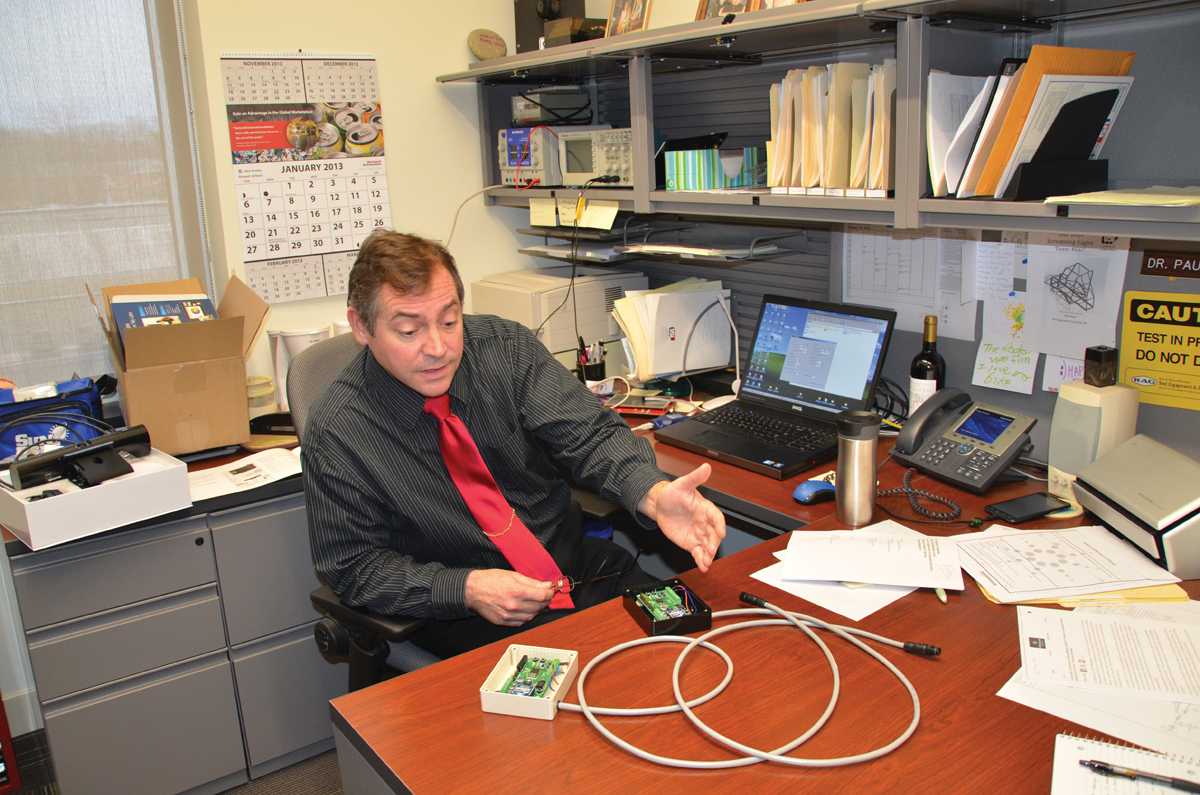Paul Kuban, engineering associate professor at USI, recently obtained a patent for the technology he created in 2004 to attain his doctorate degree in computer science and engineering. He had envisioned making an interface that would integrate the Controller Area Network (CAN) wired network with the ZigBee Wireless Personal Area Network (WPAN).
Nearly a decade later Kuban has attained a patent over such a device that he calls the CAN-Bee and seeks to license his device to interested companies.
“CAN-Bee is a gateway between the CAN wired network and the ZigBee wireless network,” Kuban said. “Many devices, for instance, like in the automotive world, require the use of a wired network. The CAN-Bee interface could remove the wired network and allow those devices to operate using a wireless network.”
The patent that was issued to Kuban in August of 2011 allows him to have exclusive rights to the technology that he has created.
“A real-world application of this interface in the medical field could be a case where someone is in bad shape,” Kuban said. “This person would be hooked up with wires to a lot of different machines and if staff needed to move that patient to the operating room they would have to disconnect those devices then reconnect them.
“This patient would go unmonitored, but with the CAN-Bee we could easily adapt this technology to that situation where the person could be monitored with a wireless transmitter,” he said.
From 2004 to 2007, Kuban worked on getting his idea off paper and onto a working prototype. In 2007, after developing several prototypes, Kuban enlisted the services of several organizations and firms to help issue a patent for his CAN-Bee technology.
“It was a pretty extensive procedure to go through the patenting of the device,” Kuban said. “A lot of people were involved: USI’s Center for Applied Research, Indiana University Research Technology Corporation, and Barnes and Thornberg, who are in the top three intellectual property law firms.”
“From the beginning I wanted to make this into something that could work,” Kuban said. “I’m not the kind of person that would have been satisfied with a paper version of the CAN-Bee.”
The CAN-Bee interface is a combination of the past and the future. CAN has been used since the 1980s in the automotive industry, while ZigBee WPAN has recently been adopted as a standard with the Institute for Electrical and Electronics Engineers (IEEE).
Recently Kuban has been working to create interest in the CAN-Bee and try to show his working prototype to interested parties.
“Looking past the patent, there’s still a lot of work to be done because you have to get the business community … aware that you have this technology available,” Kuban said. “It’s something you have to do before it becomes obsolete because, like with most electronic things, they’re the greatest thing and then two years later they’re gone.”
To help create interest and market his technology, Kuban investigated several patent brokerage firms and settled on a firm called Adapt IP Ventures.
“In the beginning I wanted to come up with a novel idea to earn my doctorate, so I’m pleasantly surprised that this could be something that could be a commercially viable product,” Kuban said. “It’s been a real fun hobby coming up with the hardware and the software, but it’s also been quite a learning experience, as well, in terms of the business side, to go from an idea to a real product.”
Several options are available to Kuban as he moves forward with his patented CAN-Bee. He has already begun to toy with new ways to use the interface, including being able to use Andriod Tablets to control it.
“Everything in terms of the future of the CAN-Bee depends on interest from companies that want to license it,” Kuban said. “There could be individual per-unit licenses, one big exclusive license or a sale of the license if someone wants to buy it outright.”
“Ideally what I would like to see happen is to see a steady income stream from the royalties produced from the CAN-Bee,” he said.
Having a working prototype is something that Kuban advises for anyone who has the next brilliant idea.
“It’s always the first question asked of anyone who has expressed interest in the CAN-Bee – ‘Do you have a working prototype?’” Kuban said. “If you have a good idea that you want to get out there, you can’t get very far with a paper design or a poster. You have to implement the technology and have something physical and real that you can show potential investors.”


